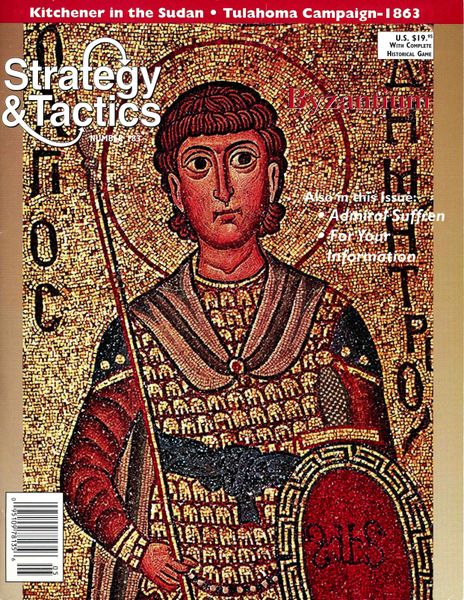Byzantium (1996) Board Game
Byzantium is a board game that was released in 1996 and designed by Joe Youst. It is a wargame set in the medieval era, focusing on the historical Byzantine Empire. The game is known for its educational value, as players learn about the intricacies of medieval warfare and politics while playing.
Game Components of Byzantium
How To Setup Byzantium
To set up the game, players start by placing their tokens on the victory point tracks. Each player receives two field army pawns and two fortifications of their color. City tokens are distributed according to the numbers in the Byzantine and Arab cities. Players are given a specific amount of money for each of their treasuries, with the rest placed near the board in the bank. The turn marker is placed on the first space of the turn track.
Gameplay Mechanics and Game Objective
Mechanics
Game Objective
Players aim to score points by controlling cities, building churches or mosques, and effectively managing their armies. The game is played over three turns, with the player managing both Byzantine and Arab forces to maximize their score.
Player Experience
Playing Byzantium involves a mix of strategic planning and tactical execution. Players must balance their resources between the Byzantine and Arab sides, using cubes and money to achieve their objectives. The game demands careful management of armies and the timing of attacks and defensive maneuvers. The dice rolling mechanism adds an element of unpredictability, making each battle unique.
Pros
Cons
Personal Thoughts on Byzantium
Byzantium is ideal for players who enjoy light war games and are interested in historical settings. It offers a unique blend of strategy and luck, making it appealing to those who like a challenge with unpredictable outcomes. However, it may not be the best fit for casual gamers due to its complexity and the need for careful resource management. For history enthusiasts and fans of strategic gameplay, Byzantium provides a rewarding and immersive experience.
We are supported by our audience. When you purchase through links on our site, we may earn an affiliate commission, at no extra cost for you. Learn more.

